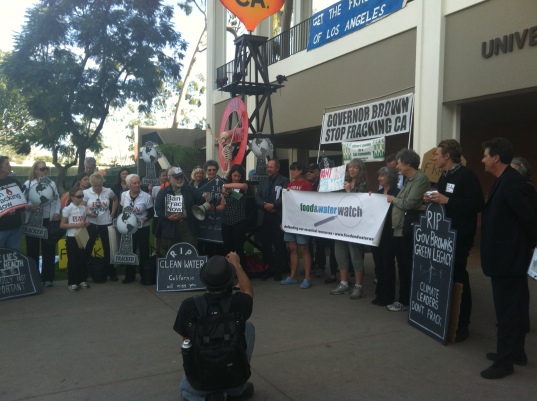The Battle to Ban Fracking in California
Modern hydraulic fracturing (fracking) is a so-called “unconventional drilling technique” used to extract gas and oil trapped in low permeability tight formations, such as shale or sandstone, which cannot be extracted using conventional techniques. This paper discusses the reasons that fossil fuel companies are in a fracking frenzy all over the country, why there is so much popular resistance, and how the battle is playing out in California.
Strong opposition to fracking has arisen in the US due to its association with innumerable incidents in multiple states of groundwater pollution, its excessive water use, its setting off of seismic activity, earth shifts, and subsidence, and fracking developments’ impact on local physical and social infrastructures. Fracking also has very serious consequences for global warming. It allows the extraction and burning of fossil fuel that would otherwise be inaccessible,and creates significant leakage of the potent greenhouse gas methane, which could cause us to reach climate tipping points earlier than we otherwise would.
California Senate Bill 4 (SB 4), written by Sen. Fran Pavley (D-Agoura Hills) and signed into law by Gov. Brown on September 20, 2013, is the first effort in California to regulate fracking. Despite this, however, Gov. Brown is a fracking advocate, and SB 4 is not what it seems. In August 2013 more than 100 environmental groups signed a letter demanding that Governor Jerry Brown refuse to sign SB 4 and immediately impose a moratorium on fracking in California, an appeal that was ignored.
The fossil fuel industry anticipates that unconventional drilling techniques will allow US output to surpass Saudi Arabia’s in the next decade, providing them with trillions of dollars of profit. Some corporations believe that California, with “64% of the total recoverable shale oil in the USA (15.4 billion barrels) … could soon become the center of the unconventional oil and gas industry in America.”
[UPDATE: In May 2014 the U.S. Energy Information Administration (EIA) cut the estimate for the amount of recoverable oil buried in California’s Monterey Shale deposits by 96%. The new estimate is that 600 million barrels of oil can be extracted with existing technology, much less than the earlier estimate of 13.7 billion barrels. Some major oil companies have always expressed skepticism about the amount of recoverable oil, but even now fossil fuel associations are hopeful. “’We have a lot of confidence in the intelligence and skill of our engineers and geologists to find ways to adapt,’ said Tupper Hull, spokesman for the Western States Petroleum Assn. … [And] Rock Zierman, chief executive of the trade group California Independent Petroleum Assn. [says] ‘The smart money is still investing in California oil and gas.’” http://www.latimes.com/business/la-fi-oil-20140521-story.html]
To gain access to the Monterey Shale reserves and block regulation, the oil industry lobby, now the biggest in California, spent an estimated $45.4 million in the state from 2009 up to 2013. The Western States Petroleum Association (WSPA) alone spent $2,308,790 on lobbying in Sacramento in the first half of 2013, not including the amounts spent by oil companies themselves. Because of industry influence, Senate Bill 4 was the only undefeated bill of several that were written to regulate or ban fracking, and this only after it was weakened by industry-approved amendments.
In addition to exerting influence on politicians and regulatory agencies, the fossil fuel industry and its allies promise jobs and general prosperity for recession-weary Californians, and have built a massive PR effort to convince us that their plans are safe and beneficial for all. Californians need greater awareness of the issues and environmentalists need to have their facts straight for the great battle ahead.
See below for the full paper. Download it for reading convenience.
